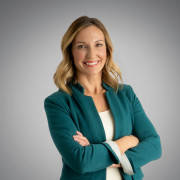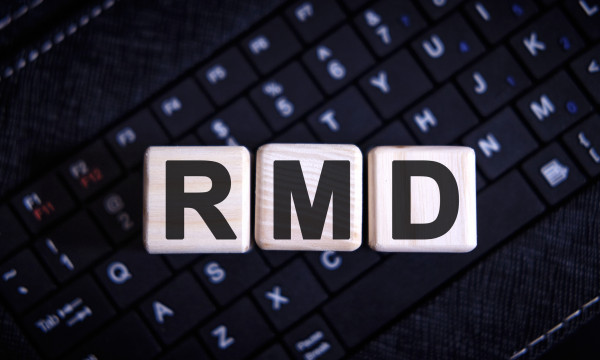SECURE 2.0 Act: What you should know

It’s been a long time coming, but as of December 29, 2022, the SECURE 2.0 Act has finally been signed into law. We’ve been watching this comprehensive piece of legislation in this space for a while now (you can see past updates here and here). But now that it’s officially the law of the land, what does SECURE 2.0 mean for you? The short answer is it depends on where you are in your retirement journey. Read on to learn more about SECURE 2.0’s effects on those who are in or near retirement and those who have many years to go.
If you’re in or near retirement
For those who are already retired or are approaching retirement age, there are a lot of important updates to be aware of, especially to required minimum distributions (RMDs) and catch-up contributions. Here are the key points to know:
- RMDs: As of January 1, 2023, the age at which owners of retirement accounts must start taking RMDs has increased to 73 (up from 72), and that number will increase again, to 75, starting in 2033. Additionally, starting in 2023, the penalty for failing to take an RMD will decrease to 25% of the amount not taken — down from a 50% penalty pre-2.0. Furthermore, the penalty will be reduced to 10% for IRA owners who withdraw the RMD they hadn’t taken and submit a corrected tax return, provided the IRA owner corrects the RMD underpayment and pays the reduced penalty within a two-year correction period. Two other changes to note: Roth accounts in employer plans will be exempt from RMD requirements beginning in 2024, and those who receive in-plan annuity payments that exceed the RMD amount can apply the excess to that year’s RMD.
- Catch-up contributions: Beginning January 1, 2025, allowed catch-up contribution amounts will increase to up to $10,000 annually to a workplace plan if you are age 60 through 63 and the plan permits this enhanced catch-up contribution limit. (Be warned, however, that if you make more than $145,000 in the prior calendar year, beginning in 2026, all catch-up contributions for those ages 50 and up will need to be made to a Roth plan in after-tax dollars.) The $1,000 catch-up limit for IRAs will be indexed to inflation starting in 2024 — meaning it could increase every year, depending on changes to cost of living.
- Roth employer accounts: Under SECURE 2.0, employers can now offer employees the option to receive fully vested employer contributions on a Roth basis; this is a change from pre-2.0, where employer contributions had to be done on a pre-tax basis.
- Qualified charitable distributions: SECURE 2.0 has expanded the type of charity (or charities) that can receive qualified charitable distributions (QCDs) from an IRA. As of 2023, people aged 70 ½ and older can elect to make a one-time gift up to $50,000 to a charitable remainder unitrust, a charitable remainder annuity trust, or a charitable gift annuity as part of their QCD limit. This amount also counts toward the annual RMD as applicable. Remember that QCDs cannot be made to all charities and that they must come directly from your IRA by the end of the calendar year; if you’re uncertain of what you should do, speak to a trusted advisor for help.
- Annuity changes: As of January 1, 2023, qualified longevity annuity contracts, or QLACs, are getting a boost — specifically, dollar limitations for premiums is increasing from $145,000 to $200,000. Additionally, premiums will no longer be limited to 25% of your retirement account balance.
If you’re still years away from retirement
Not yet at retirement age? Worry not, SECURE 2.0 has some updates for you too as you plan ahead for your golden years. Here’s what you need to know:
- Automatic plan enrollment: Beginning in 2025, SECURE 2.0 will require businesses who adopt new 401(k) or 403(b) plans to automatically enroll eligible employees at a contribution rate of at least 3%.
- Student loan debt: Certainly a hot topic of the past few years, SECURE 2.0 makes it possible for employees to save for retirement while paying off student loans. Beginning in 2024, employers will be able to “match” the payments you make to student debt by contributing a matching payment to your retirement account.
- 529 plans: SECURE 2.0 allows you to roll over 529 plan assets into a Roth IRA for the beneficiary after 15 years, in line with annual Roth contribution limits and a lifetime limit of $35,000. It’s a great way to put unused 529 funds to work for your beneficiary.
- Emergency savings: Finally, starting in 2024, SECURE 2.0 makes it possible for defined contribution retirement plans to add an emergency savings account that is a designated Roth account for non-highly compensated employees. The yearly contribution limit is $2,500 or less, and the first four withdrawals in a year will be free of taxes and penalties. There is also potential for an employer match, depending on plan rules. The hope is that this change will encourage saving for emergencies and discourage folks from raiding their retirement accounts (often at a great penalty) to pay for unexpected expenses.
We’re here to help
All of this information may seem a little overwhelming, but don’t worry — the experts in UBT’s Retirement Plan Services and wealth management departments are here to help answer questions and make sure you’re getting the most out of your funds. Contact your Relationship Manager today!
|
Learning Center articles, guides, blogs, podcasts, and videos are for informational purposes only and are not an advertisement for a product or service. The accuracy and completeness is not guaranteed and does not constitute legal or tax advice. Please consult with your own tax, legal, and financial advisors.




